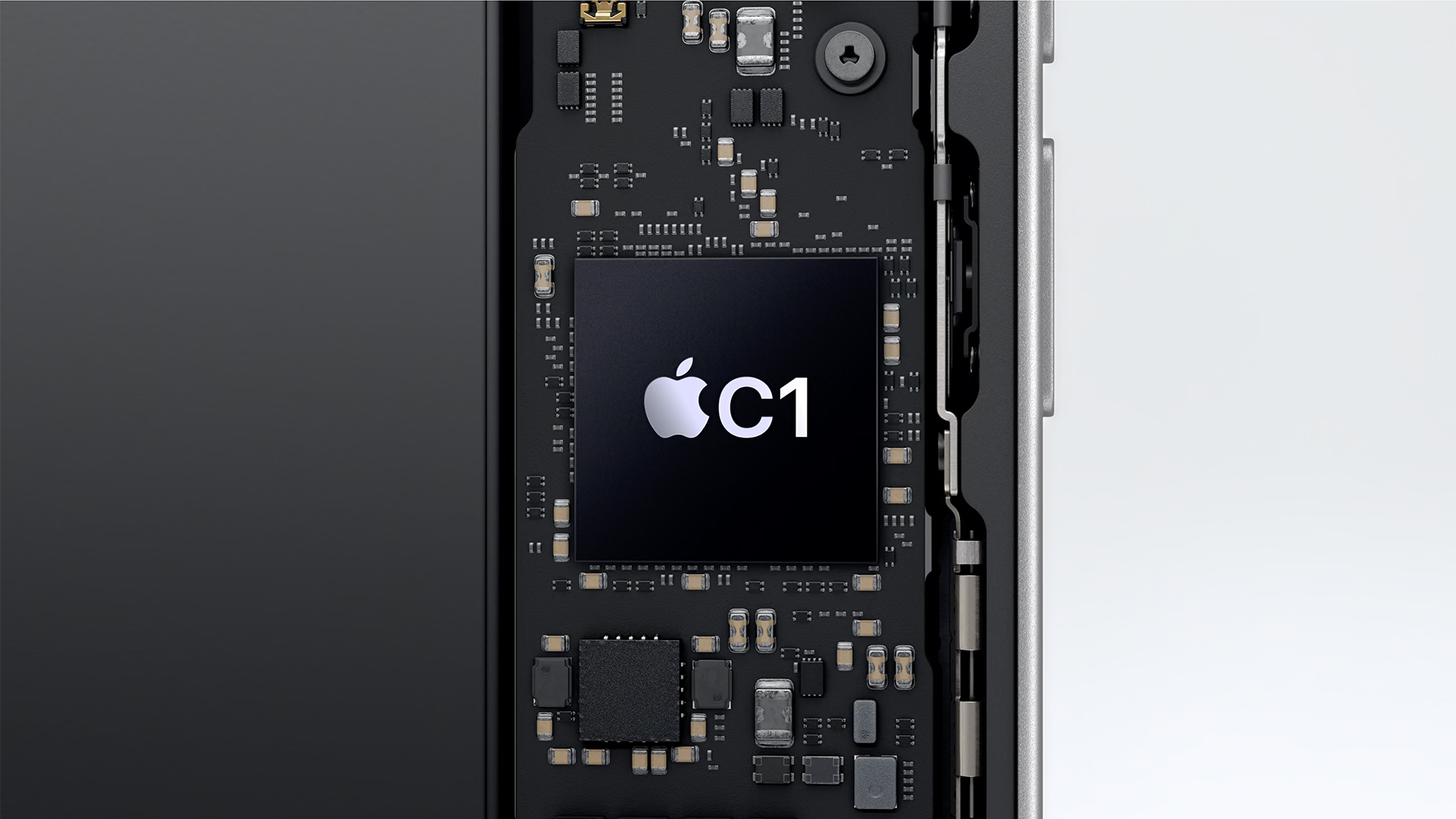Apple on Wednesday formally introduced its first in-house developed 5G modem that will be used in the company’s new $599 6.1-inch iPhone 16e smartphone, aimed at the mainstream audience. The modem is the first fruit from Apple’s acquisition of Intel’s 5G modem business unit six years ago.
Apple says its C1 is the “most power-efficient modem ever on iPhone” and delivers “fast and reliable 5G connectivity.” Indeed, the modem supports most key 4G and 5G technologies, including sub-6 GHz 5G with 4×4 MIMO, Gigabit LTE with 4×4 MIMO, FDD-LTE, TD-LTE, as well as 3G and 2G capabilities for compatibility.
Yet, the company does not disclose how this energy efficiency was achieved. Apple could use its own custom Arm or RISC-V-based cores with optimized power consumption. Also, the company uses one of TSMC’s 4nm-class process technology (presumably N4P) to make C1 chips (according to an interview with Reuters), which assists in reducing power consumption. Since Apple tends to tightly integrate its hardware (C1) and software (iOS 18), it can enable its own proprietary power states that allow it to cut power consumption without performance degradation.
For now, Apple’s C1 is used exclusively inside the iPhone 16e, which is a mainstream handset that does not support a number of performance-enhancing yet power-hungry capabilities, such as Wi-Fi 7, mmWave 5G, TDD (time division duplex) 4G and 5G networks, and DC-HSDPA.
mmWave 5G can deliver very high data rates, but to achieve them, the phone has to pack phased-array antennas and rely heavily on beamforming. 5G handsets with mmWave support must constantly adjust beams and manage multiple antenna elements in real-time, which means greater signal processing, more frequent power amplifier usage, and higher power consumption.
TDD networks use a single frequency channel for both uplink and downlink transmissions but at different time intervals, which adds flexibility and improves spectrum efficiency, making them beneficial in dense urban areas. However, TDD networks require strict timing synchronization between the phone and the base station, as well as switching between UL and DL, so the phone has to continuously adjust its transmission timing and radio circuits, which adds processing overhead and increases power consumption. Also, in weak signal areas, a phone has to increase its transmission power to maintain a connection, which is more taxing in TDD than in FDD.
The same applies to DC-HSDPA: the feature increases data rates by using two carrier frequencies instead of one, which inherently means that the device’s radio components are working harder, leading to increased power consumption. However, this can all be optimized.
At this point, we do not know whether Apple’s C1 lacks support for certain power-hungry features altogether, or if it is the iPhone 16e that omits certain features to cut its costs and power consumption. For example, the smartphone does not feature Apple’s ultra-wideband chip, Thread networking technology, or MagSafe charging (although it does support Qi wireless charging and lacks magnets for MagSafe), and even the Camera Control button — four features that are cheap and easy to implement.
On the bright side, Apple’s iPhone 16e is based on a rather powerful A18 processor with six cores and a cut-down quad-cluster GPU that comes equipped with enough memory to run Apple Intelligence applications.
Apple tends to use its own silicon instead of third-party chips whenever possible, so expect the C1 and its successors to be used more widely over time. For now, the C1 enables Apple to cut its costs (as it does not need to pay a premium to Qualcomm) and perhaps use it as bargaining leverage when negotiating prices with Qualcomm. Nonetheless, over time, Apple plans to use its own modems across all of its devices.
“C1 is the start, and we’re going to keep improving that technology each generation, so that it becomes a platform for us that will be used to truly differentiate this technology for our products,” Johny Srouji, Apple’s senior vice president of hardware technologies, told Reuters.
